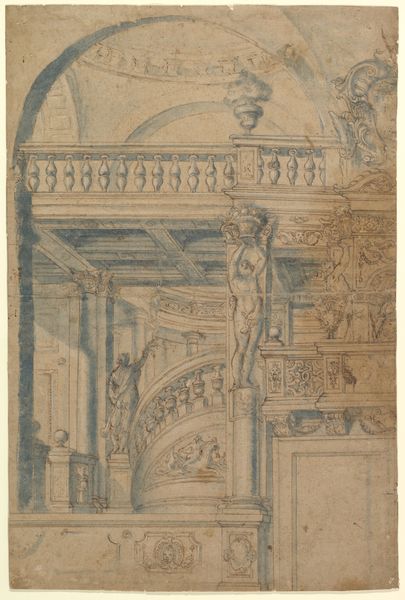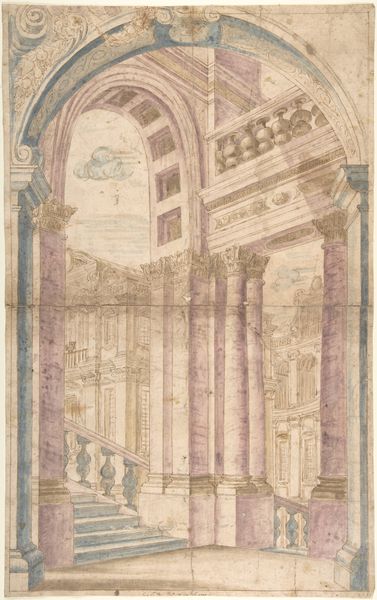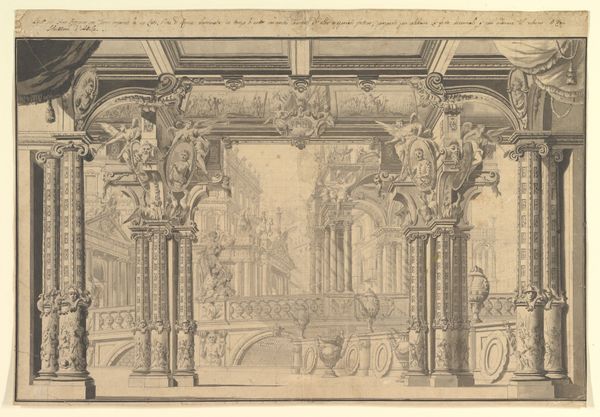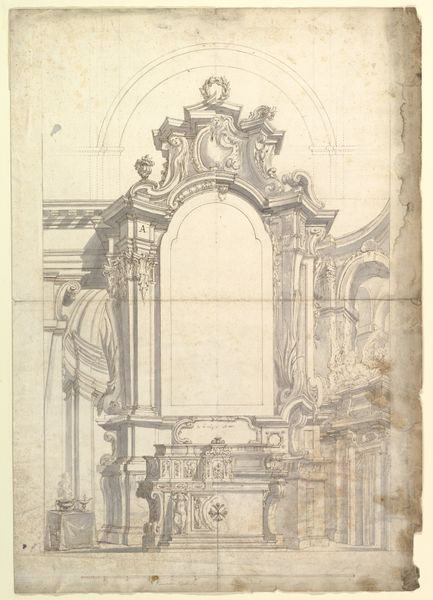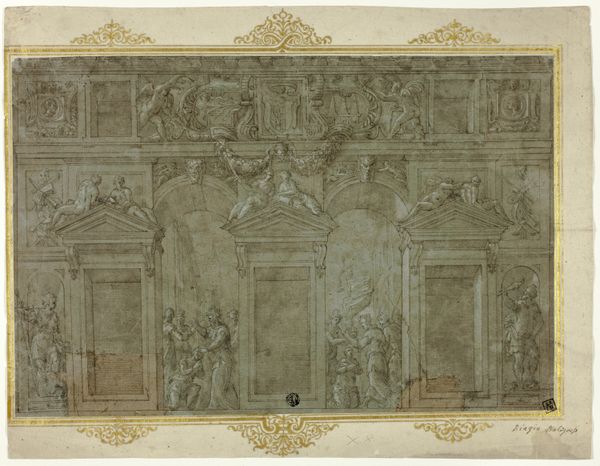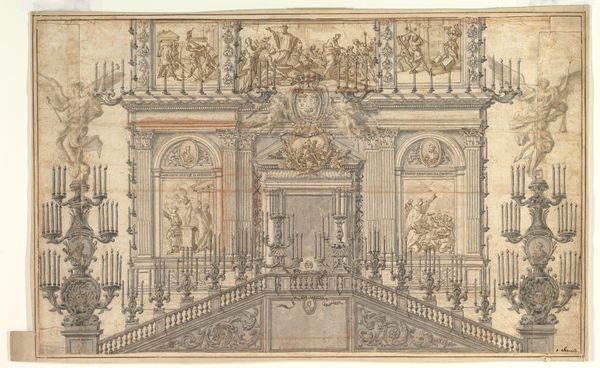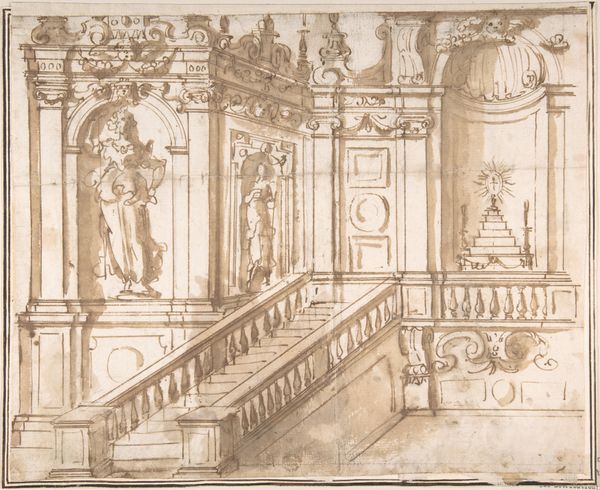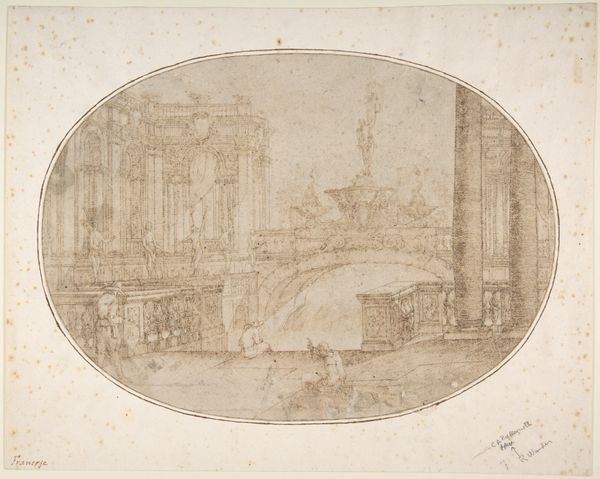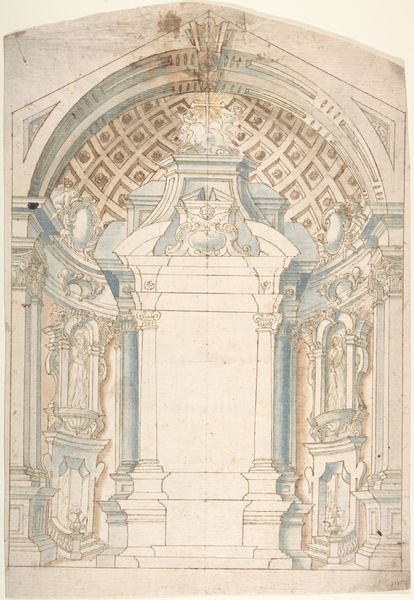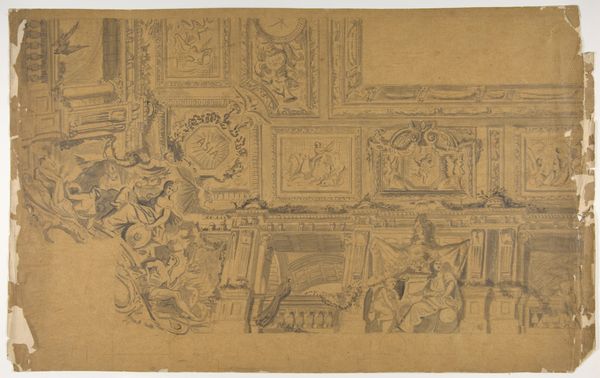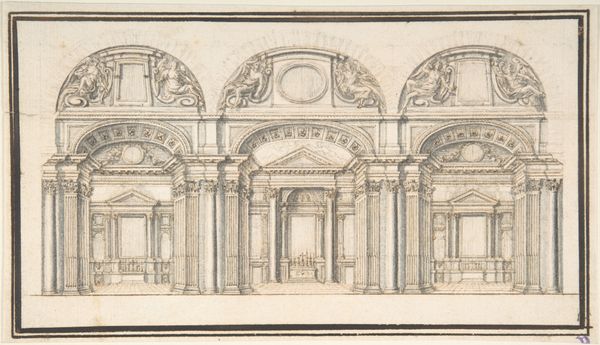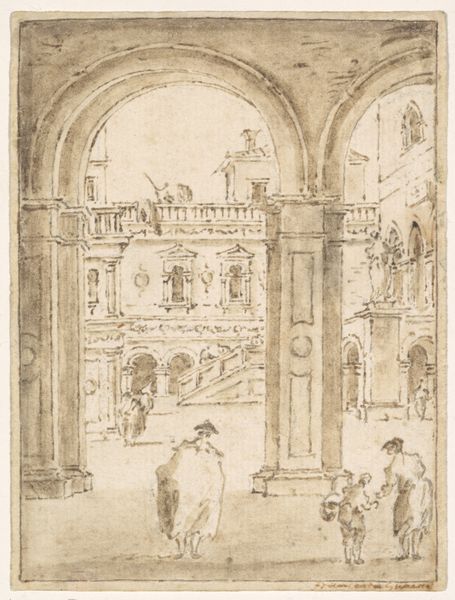
Dimensions: 8 15/16 x 13 7/16 in. (22.7 x 34.1 cm)
Copyright: Public Domain
Editor: So, this drawing is titled "Study for the Rotunda of a Palace," created between 1695 and 1761 by Jacques de Lajoüe. It's rendered in pencil and etching on paper. It feels… expansive, but also somehow frozen in time. What catches your eye in this piece? Curator: The overarching cultural memory embedded in architectural depictions of palaces, of course. Notice how Lajoüe isn't just presenting a structure, but a stage for human action and social ritual. What visual cues suggest the Neoclassical era and its fascination with antiquity, and what do you see happening in that implied space? Editor: Well, the columns, the arches… They’re clearly drawing inspiration from ancient Roman architecture. It looks like people are relaxing, perhaps waiting. Is that a fountain on the right? Curator: Precisely! And fountains often represented purity, life, and the power of the ruling class. The gathering figures suggest a formal audience or perhaps actors preparing for a play. Notice how the implied presence of a drama evokes both civic pride and perhaps, a darker understanding of state authority. It raises questions about our relationship with the art's history. Editor: It’s interesting how the architectural details, down to the figures, all convey layers of meaning. I didn’t quite realize the drama implied in what seemed at first a rather staid rendering of architecture. Curator: Indeed. An image speaks, or in this case whispers, volumes when you understand the cultural lexicon informing it. This image helps us recognize shared traditions. Editor: Looking at it this way, the image is like a condensed story of power and tradition. It makes me appreciate the architecture on a totally different level!
Comments
No comments
Be the first to comment and join the conversation on the ultimate creative platform.
